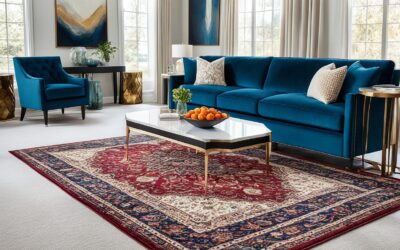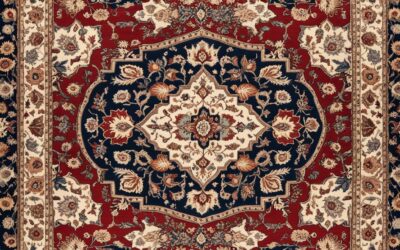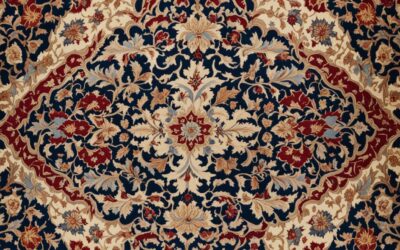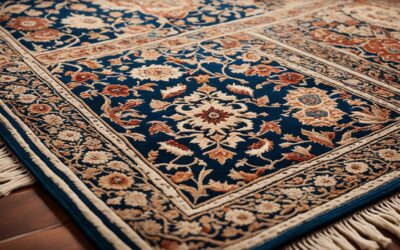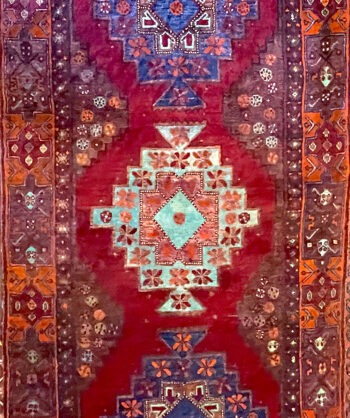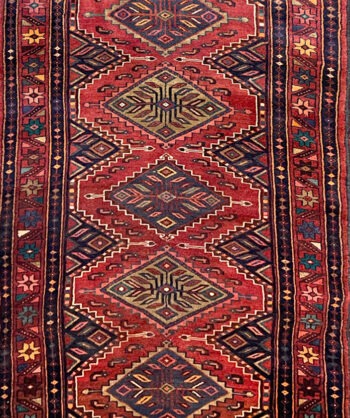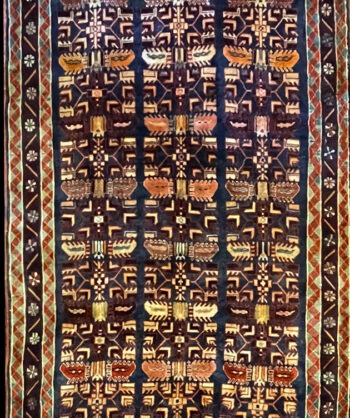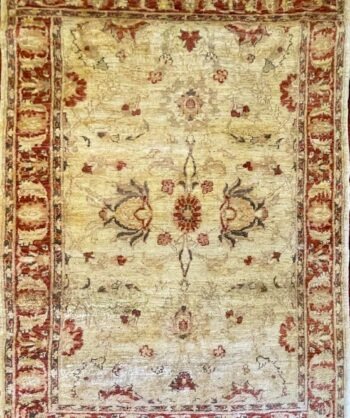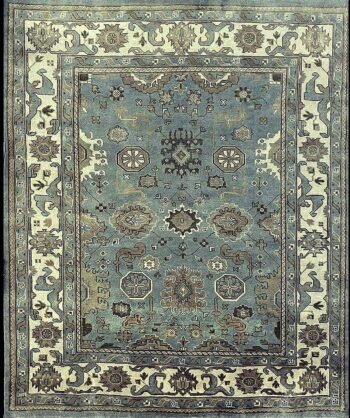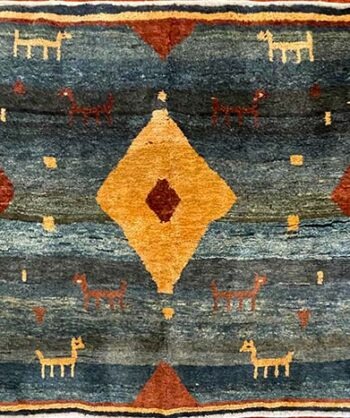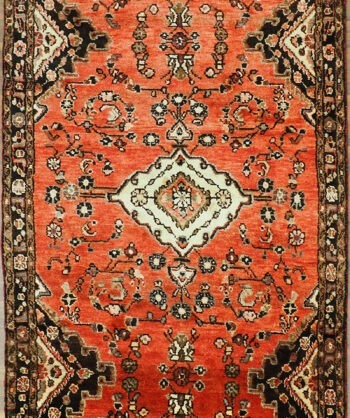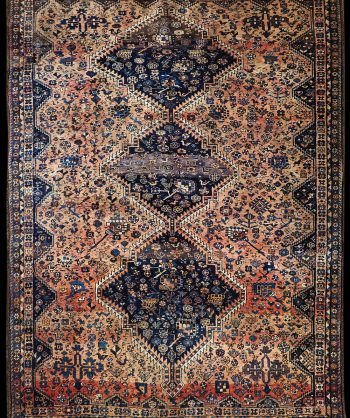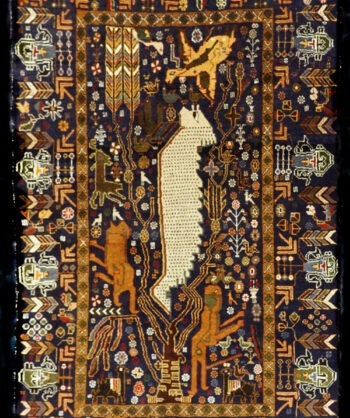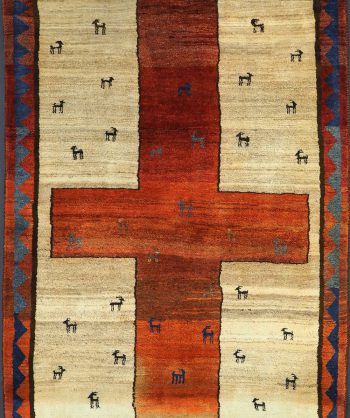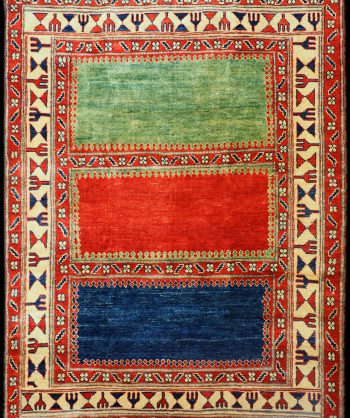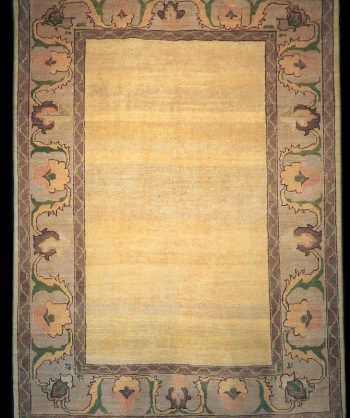Table of Contents
Handmade Persian and Oriental rugs have always amazed people with their detailed designs and bright colors. They are not just useful items but also beautiful art. These rugs show the deep history, culture, and traditions of the places they come from.
This article will look into the importance of these rugs in Persian and Oriental cultures. We will see how they changed over time under different rulers and empires.
From old times to now, Persian and Oriental rugs have been key to their cultures’ artistic identity. As we look into their history, we’ll see how their designs and making changed. This will show us the history that made these rugs so special.
Key Takeaways
- Handmade Persian and Oriental rugs are artistic masterpieces that reflect the rich history, culture, and traditions of their regions.
- These rugs have played a crucial role in defining the artistic identity of their respective cultures throughout history.
- The designs and production techniques of Persian and Oriental rugs have evolved over time, reflecting the historical context that shaped their creation.
- Exploring the stories behind Persian and Oriental rugs provides a deeper understanding of the cultural significance and symbolism of these intricate works of art.
- The fascinating history and evolution of Persian and Oriental rugs continue to captivate audiences around the world.
The Ancient Origins of Persian Rug Weaving
Rug-making in Persia (modern-day Iran) has a long and fascinating history. It goes back thousands of years. The Pazyryk Rug is a key part of this tradition. It shows us the beauty of Persian rug weaving.
The Pazyryk Rug: The Oldest Known Pile-Woven Carpet
The Pazyryk Rug was found in a frozen tomb in the Altai Mountains of Siberia. It’s a 2,500-year-old treasure that has amazed many. This ancient Persian rug is the oldest pile-woven carpet we know. Its design and colors are still vibrant, showing how well it has lasted.
The Pazyryk Rug’s patterns and colors give us a peek into the Persian rug weaving traditions of the Achaemenid Empire. This empire ruled from the 6th to the 4th centuries BCE. The rug’s skillful making and details helped start the famous Persian rug mythology and designs.
Other than the Pazyryk Rug, the beginnings of ancient Chinese rugs and Central Asian rug-making traditions also shaped Persian rug weaving. These influences have made Persian rug patterns and techniques famous around the world.
The Stories Behind Persian Rugs Through the Ages
The Islamic Golden Age, from the 8th to the 14th century, changed the world of Persian rug making. This time was full of growth in culture, economy, and art. Artisans made big steps in rug-making techniques and designs.
As the Islamic world grew, it took in many artistic styles. This led to new materials, ways of weaving, and dyeing. This made Persian rugs more complex and beautiful.
New designs and patterns came into rug designs. They showed the art and culture of the Islamic world. The arabesque, a special design, became a key part of Islamic art. It was used a lot in Persian rugs.
The Silk Road helped spread rug-making skills, materials, and designs. This made rugs more diverse in style and pattern.
“The Persian rug is not just a floor covering. It’s a tapestry of stories, a canvas that shows the essence of an ancient and vibrant culture.”
Persian rugs have always been more than just floor coverings. They show the cultural significance and symbolic meaning of their makers. They have floral motifs that remind us of Persia’s gardens and geometric patterns that show the balance of the universe.
The Persian rug industry has been key to the region’s economy and culture for a long time. Each weaving place has its own style and way of making rugs. Today, the world still admires these rugs for their beauty and skill. The stories they tell are a big part of the Persian rug legacy.
The Safavid Dynasty: Persian Rugs’ Golden Era
The Safavid Dynasty (1501-1736) was a golden time for Persian rug-making. Shah Abbas I loved the arts and helped make rug-weaving great. Under him, the industry grew, and famous rugs were made.
The Emergence of Iconic Designs and Weaving Centers
Cities like Kerman and Kashan became big for rug-making during this time. Kerman was known for its detailed rugs with lots of colors and flowers. Kashan was famous for its silk carpets with beautiful designs and flowers.
The Safavid court made some of the most famous rugs ever, like the Ardabil Carpet and the Sheikh Safi Carpet. These rugs showed the best of Safavid art with their amazing designs and skill.
| Rug Design | Weaving Center | Distinguishing Features |
|---|---|---|
| Ardabil Carpet | Ardabil | Intricate floral patterns, exceptional craftsmanship |
| Sheikh Safi Carpet | Ardabil | Elaborate medallion design, rich color palette |
| Kerman Rugs | Kerman | Densely-knotted, floral patterns, vibrant colors |
| Kashan Rugs | Kashan | Fine silk, medallion designs, delicate floral motifs |
The Safavid Dynasty made rug-making a top art form. They drew in the best artisans and made incredible carpets.
“The Safavid era produced some of the most iconic and celebrated rugs in history, such as the Ardabil Carpet and the Sheikh Safi Carpet, which showcased the pinnacle of Safavid artistry.”
The Ottoman Empire’s Influence on Rug-Making Traditions
The Ottoman Empire stretched across three continents from the 14th to the early 20th century. It deeply influenced rug-making. The Ottomans took in many cultures and arts. This led to a unique and rich rug-making heritage.
The Ottoman court loved the arts. It supported skilled weavers and master craftsmen. During the Ottoman era, many rug-making places grew. Each had its own style and look.
- Usak was famous for “Holbein” and “Lotto” carpets. They had geometric designs and starred medallions.
- Bergama mixed Anatolian and Caucasian styles. It used bold colours, geometric patterns, and high-quality wool.
- Konya made carpets with geometric and floral designs.
Ottoman rugs are special. They mix geometric and curvy designs, bright colours, and the Turkish, or Gördes, knot. This makes them different from Persian and Central Asian rugs.
“The Ottoman Empire’s influence on rug-making traditions is a testament to the region’s rich cultural heritage and the enduring legacy of its master weavers.”
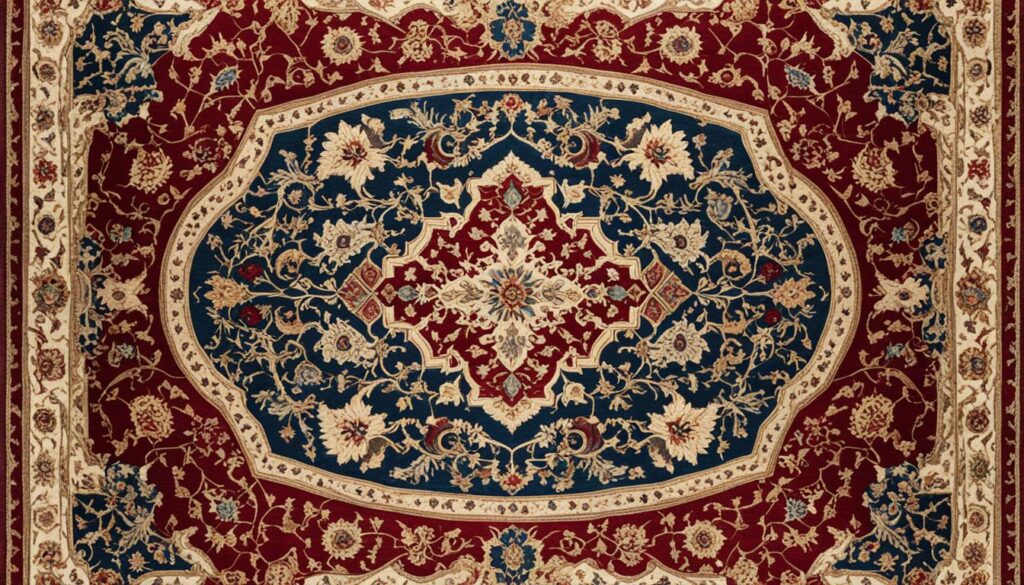
| Rug-Making Centre | Distinctive Characteristics |
|---|---|
| Usak | Renowned for “Holbein” and “Lotto” carpets featuring geometric designs and starred medallions |
| Bergama | Distinctive style combining Anatolian and Caucasian elements, with bold colours, geometric patterns, and high-quality wool |
| Konya | Produced carpets with stylised geometric and floral designs |
Conclusion
The history of Persian rugs is a long and fascinating journey. It shows the rich culture and art growth of the region. From the ancient Achaemenid Empire to the Safavid Dynasty and the Ottoman Empire, Persian rugs have changed and improved a lot.
These rugs tell stories of the skill, creativity, and strength of the artisans. They have kept this art alive for many years. Today, Persian rugs still amaze us with their detailed patterns, bright colors, and deep cultural meaning.
Reflecting on Persian rugs, we see the amazing artistry, hard work, and cultural depth passed down through time. These textiles show the human spirit. They represent the constant creativity and strength of the Persian artistic tradition for centuries.
FAQ
What is the significance of Persian and Oriental rugs in their respective cultures?
Handmade Persian and Oriental rugs are more than just items for the floor. They are art that shows the history and culture of their places of origin. They help define the artistic identity of their cultures.
What is the story behind the Pazyryk rug, the world’s oldest known surviving rug?
The Pazyryk rug is a 2,500-year-old treasure found in the Altai Mountains of Siberia. It amazes people with its design and condition. It shows the ancient skill of rug-making and the talent of long-lost artisans.
How did the Islamic Golden Age impact the development of rug-making techniques and designs?
The Islamic Golden Age brought new life to rug-making. From the 8th to the 14th century, the Islamic world grew and brought in new art styles. This led to better rug-making skills and designs.
Artisans tried new materials and ways of weaving and dyeing. They created more complex and beautiful rugs. New patterns like the arabesque became a key part of Islamic art and rugs.
What was the impact of the Safavid Dynasty on Persian rug-making?
The Safavid Dynasty (1501-1736) was a golden time for Persian rugs. The Safavid rulers loved the arts and supported rug-weaving. This led to the creation of famous rugs like the Ardabil Carpet and the Sheikh Safi Carpet.
How did the Ottoman Empire’s influence shape the rug-making traditions in the region?
The Ottoman Empire (14th to early 20th century) changed rug production and trade. As they grew, they brought in new cultures and art. This led to a unique rug-making tradition.
Places like Usak, Bergama, and Konya became known for their rugs. Each had its own style, mixing Anatolian and Caucasian elements. They used the Turkish knot and geometric patterns.


